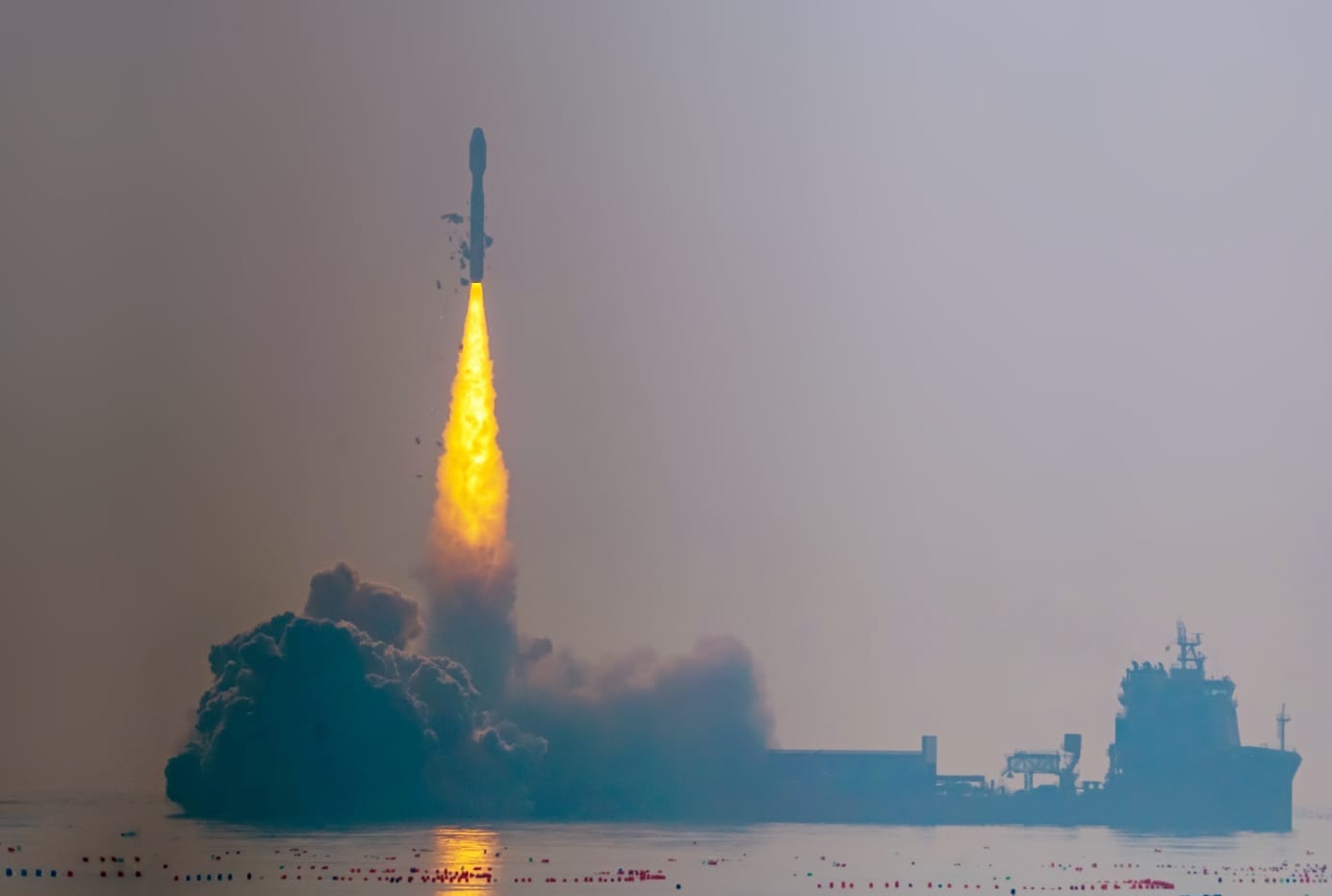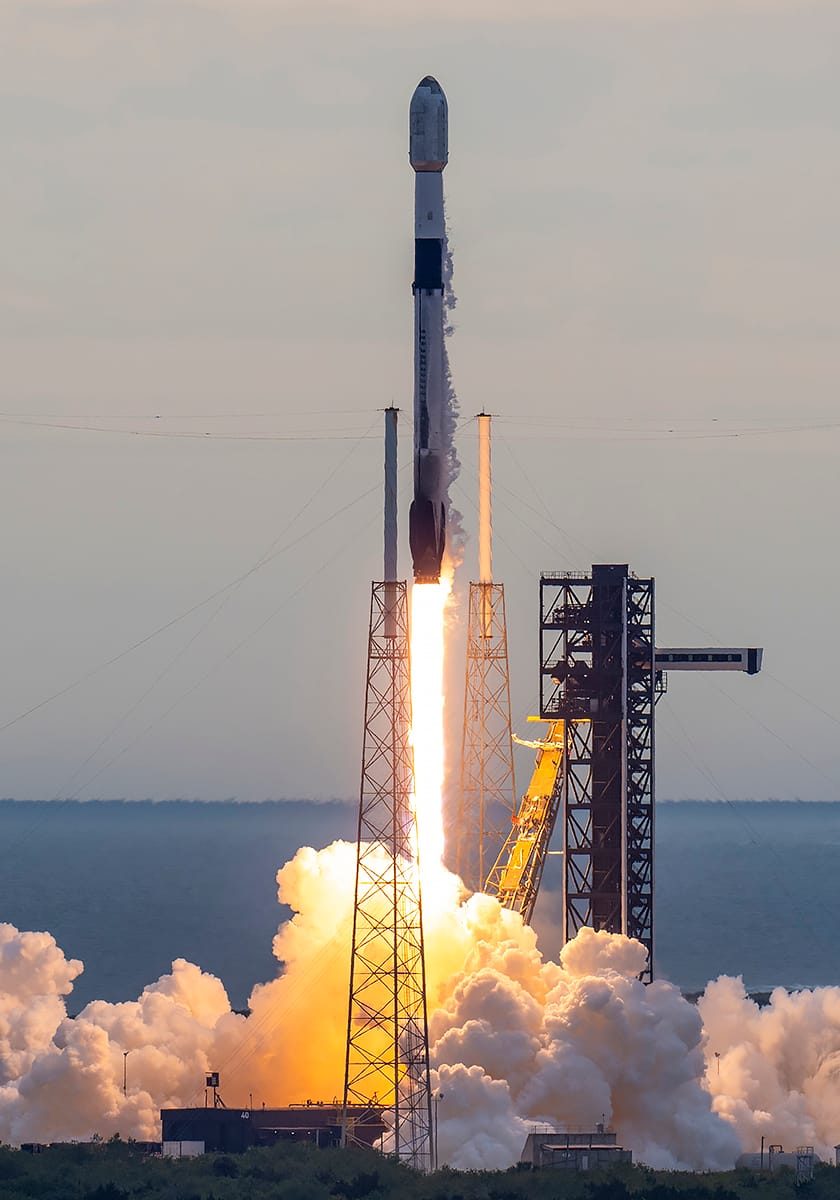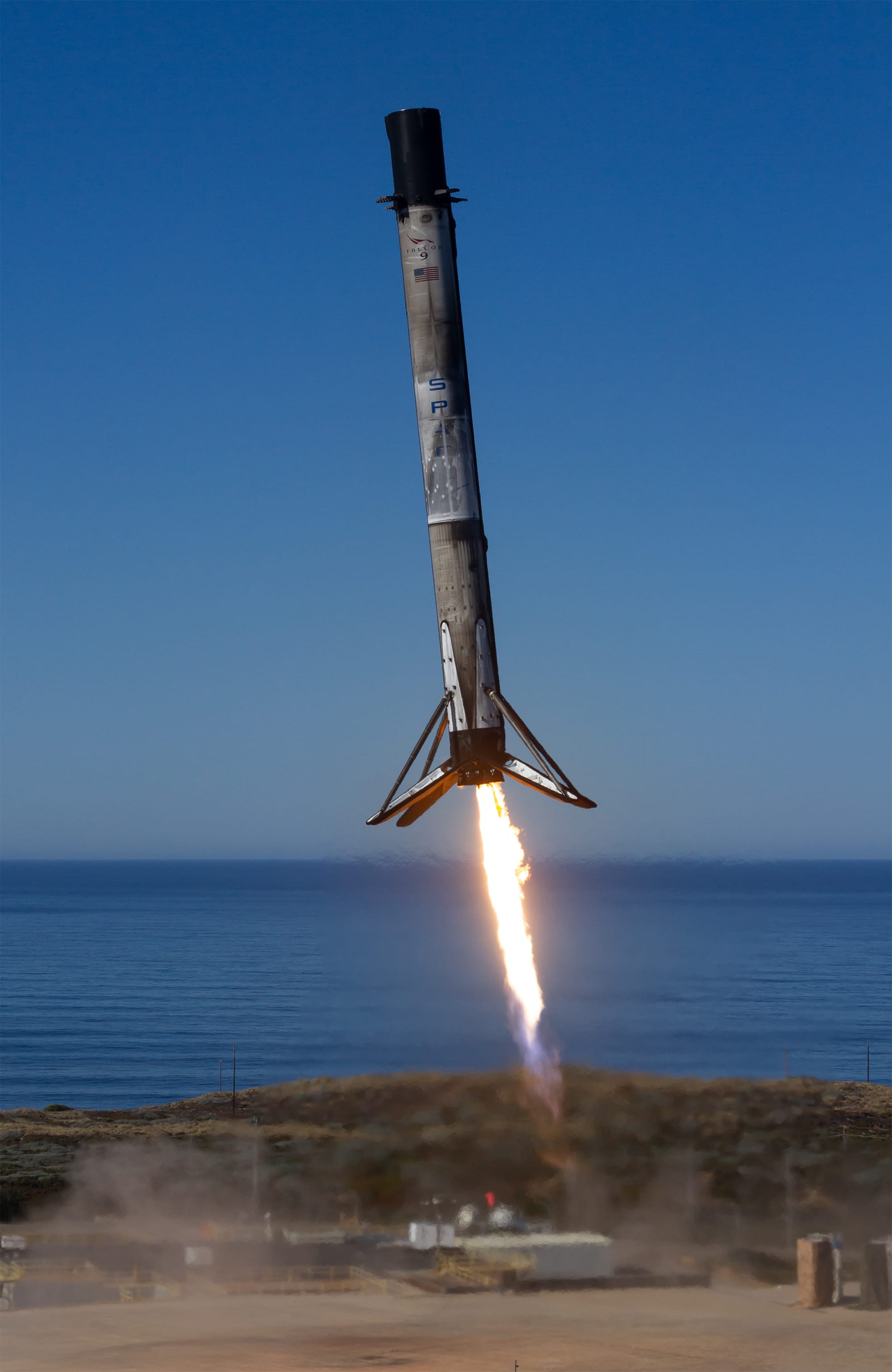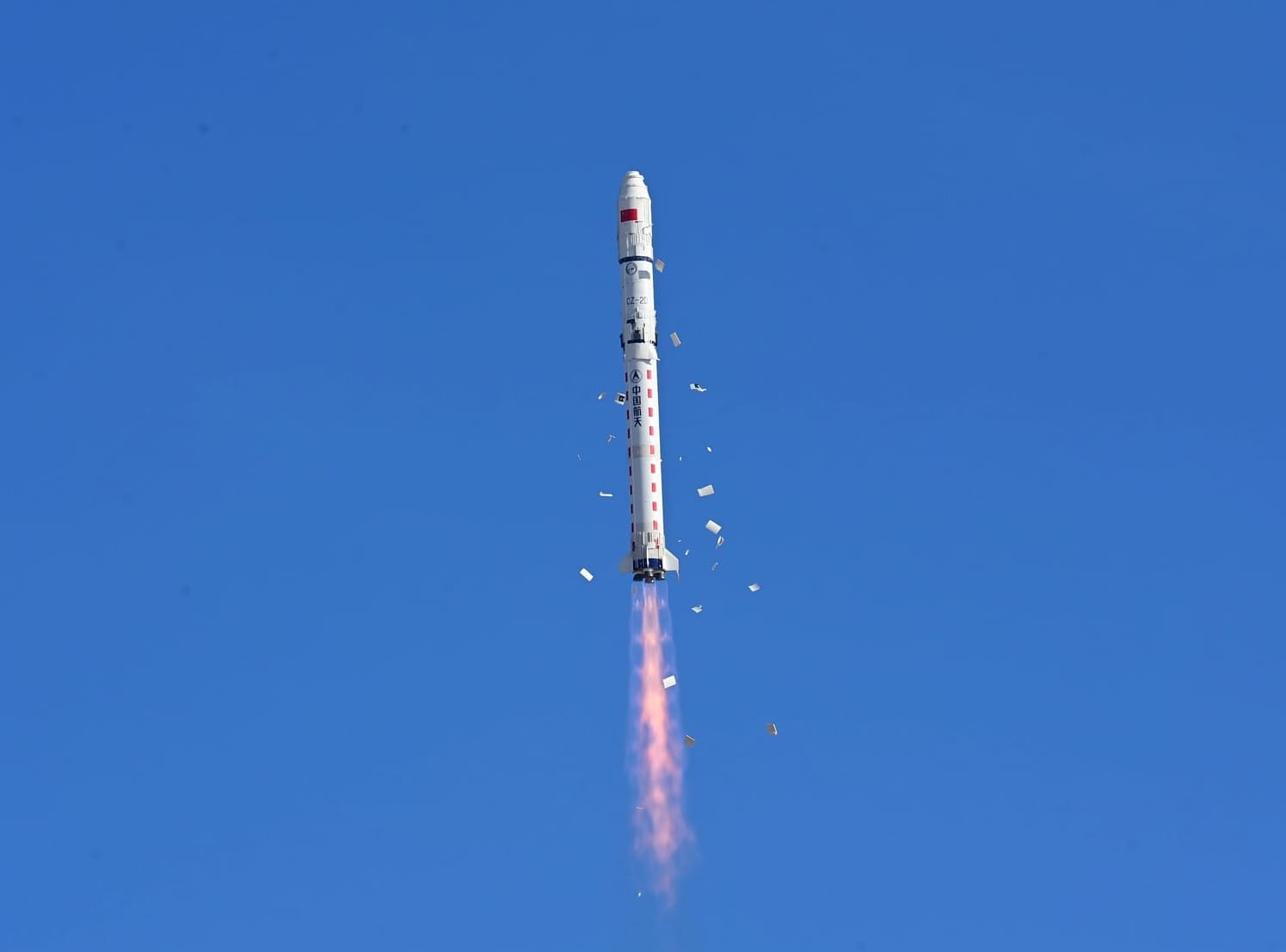Table of Contents
Welcome back to Weekly Dose of Space! Last week saw seven launches take place, with two of them being ginormous reusable launch vehicles. News this week had India becoming the fourth country to dock two spacecraft, Stoke Space completing its largest funding round, and Rocket Factory Augsburg gaining its launch license. As always, we'll also look ahead to what the worldwide launch schedule might look like next week.
SpaceX
This week at Starbase began on January 12th when Ship 33 was lifted back on top of Booster 14 for the final time ahead of the seventh flight test. A few days later on January 14th, the Ship transport stand left the launch site for the production site, a sign that the next flight was imminent as Ship 33 could no longer be destacked. On January 15th Ship 34, destined to fly for the eighth flight test, was moved from the production site to the Massey's test site.
Finally on January 16th at 22:37 pm Universal Coordinated Time, Starship-Super Heavy lifted off from Starbase with Booster 14 running all thirty-three of its Raptor engines up to staging. Upon separating Booster 14 began its trip back to the launch site while Ship 33 continued on to space. Almost seven minutes after it left Booster 14 was caught by the launch tower! Sadly Ship 33 was lost not long after with all six of its engines gradually failing after a fire was believed to have broken out.

In the evening after the catch, the booster transport stand made its way from the production site to the launch site ahead of operations to bring Booster 14 back for post-flight inspections. The following day on the 17th Ship 34 underwent cryogenic testing at the Massey's test site, filling both its liquid methane and liquid oxygen tanks. Late on the 17th Booster 14 was removed from the orbital launch mount, where it had been placed after the catch, onto its transport stand, and then moved to the production site.
Before sunrise on the 18th, the second launch tower's arm carriage was moved from the production site to the launch site ahead of installation. Preparations to install the carriage were seen too. More cryogenic testing of Ship 34 was also spotted on the 18th.
Launches This Week
January 13th - Jielong-3 with ten CentiSpace-1 satellites
A Jielong-3 blasted off from the Dongfang Hangtiangang launch platform off the coast of Haiyang in the Yellow Sea carrying ten CentiSpace-1 satellites into low Earth orbit. The CentiSpace-1 satellites are part of a planned constellation of up to 190 satellites to provide high-accuracy global navigation services.

January 13th - Falcon 9 with Starlink Group 12-4
A Falcon 9 lifted off from Space Launch Complex 40, in Florida, carrying twenty-one Starlink satellites into low Earth orbit. This launch was supported by booster B1080, making its fifteenth flight and landing downrange on the drone ship 'A Shortfall Of Gravitas'.

January 14th - Falcon 9 with Transporter-12
SpaceX performed its twelfth dedicated rideshare mission to sun-synchronous orbit carrying 131 satellites atop of Falcon 9 flying from Space Launch Complex 4E, in California. Supporting this mission was B1088 on its second flight, landing at Landing Zone 4 back in California.

January 15th - Falcon 9 with two lunar landers
From Launch Complex 39A, in Florida, Falcon 9 rocket blasted off to a lunar transfer orbit carrying Firefly's Blue Ghost and ispace's Hakuto-R lunar landers. Supporting the launch of the two landers was booster B1085, for its fifth mission and landing on the drone ship 'Just Read The Instructions' downrange. Details about both lunar landers are available here.

January 16th - New Glenn for its maiden flight
Blue Origin performed the first mission for its New Glenn launch vehicle, sending its second-stage and the Blue Ring prototype into medium Earth orbit. New Glenn's first-stage booster, called 'So You're Telling Me There's a Chance', was aiming to land on the drone ship, named 'Jacklyn', downrange but the booster was lost during descent. More details about the maiden mission are available here.

January 16th - Starship-Super Heavy for its seventh flight test
SpaceX conducted Starship-Super Heavy's seventh flight test from the company's Starbase launch site, near Boca Chica in south Texas. This flight test utilized Ship 33 and Booster 14. During the test flight Booster 14 was caught by the tower back at the launch site while Ship 33 was lost during ascent. More details about this flight test are available here.

January 17th - Long March 2D with PRSC-EO1 and two other satellites
A Long March 2D blasted off from Launch Area 4 at the Jiuquan Satellite Launch Center carrying three satellites into sun-synchronous orbit. These satellites were Pakistan's PRSC-EO1 resource monitoring satellites, the Lantan-1 ocean monitoring satellite, and the Tianlu-1 remote sensing satellite.

In Other Space News
India becomes fourth country to dock spacecraft!
ISRO successfully completed docking of two SPADEX satellites (SDX-01 & SDX-02) in the early hours of 16 January, 2025.#SPADEX #ISRO pic.twitter.com/UJrWpMLxmh
— ISRO (@isro) January 17, 2025
ISRO's annoucment of the successful docking during the SpaDeX mission, via ISRO on X.
On January 16th, the Indian Space Research Organization announced that India had become the fourth country to demonstrate the ability to dock two spacecraft in orbit during the SpaDeX mission! India's Prime Minister Narendra Modi congratulated the space agency on the achievement saying:
"Congratulations to our scientists at [the Indian Space Research Organization] and the entire space fraternity for the successful demonstration of space docking of satellites. It is a significant stepping stone for India’s ambitious space missions in the years to come."
With the docking achieved, the two SpaDeX spacecraft will test transferring power between each other. The two spacecraft will also eventually undock to commence their extended missions as well.
The SpaDeX mission consists of two 220-kilogram CubeSats with docking hardware and independent propulsion, as well as solar panels to generate power. One of the satellites acted as the 'target' while the other was the 'chaser'. Over the course of a few weeks, the two spacecraft progressively closed from a distance of 20 kilometers to 5 kilometers, 1.5 kilometers, 500 meters, 225 meters, 15 meters, and finally 3 meters ahead of docking.
Lessons learned from the SpaDeX mission will ultimately benefit the Chandrayaan-4 lunar sample return mission, the Gaganyaan crewed spacecraft, and India's modular space station in the future.
Stoke Space raises 260 million dollars in additional funding

Stoke Space announced on January 15th that it had completed its Series C funding round, with Breakthrough Energy Ventures, Glade Brook Capital Partners, Industrious Ventures, Leitmotif, Point72 Ventures, Seven Seven Six, the University of Michigan, Woven Capital, and Y Combinator investing, among others. This latest funding round brings 260 million United States Dollars to the company, bringing total funding raised to 480 million.
With the funding, Stoke Space is developing a fully reusable medium-lift launch vehicle, called Nova, for a debut sometime in 2025. To power Nova the company is also developing a liquid methane and liquid oxygen burning engine called Zenith for the first-stage as well as an aerospike-like liquid hydrogen and liquid oxygen burning engine for the second-stage, which will also double as a regeneratively cooled heatshield.
Andy Lapsa, Stoke Space's Cheif Executive Officer and Co-founder, commented on the latest funding round saying:
“We deeply appreciate the confidence investors have placed in Stoke and our mission,” – “This new investment validates our progress and enables us to accelerate the development of technologies that will redefine access to and from space.” – “Rapid and reliable reuse of a rocket’s upper stage is the last big challenge to solve before mobility to and from space becomes akin to other forms of transportation,” – “It represents a significant inflection in the space economy, and in turn opens the door to an incredible set of business opportunities that make life more vibrant on and off Earth.”
Rocket Factory Augsburg gains launch license
The United Kingdom's Civil Aviation Authority granted Rocket Factory Augsburg a launch license for its RFA One rocket last week on January 16th. This launch license is the first time the island nation has granted regulatory approval for a vertical launch. Speaking on the launch license, Head of the Civil Aviation Authority, Rob Bishton, said:
“This is a new era for aerospace and granting the first vertical launch license from UK soil builds towards a historic milestone for the nation." – “This license is the culmination of extensive hard work behind the scenes to put appropriate safety and environmental measures in place before launch." – “Through effective licensing and regulation we are enabling the expanding space sector to reach new heights.”
With the regulatory approval now granted Rocket Factory Augsburg plans to launch its RFA One launch vehicle from the SaxaVord Spaceport, located on the Shetland Islands in Scotland. This launch is expected in the coming months due to the company needing to build another first-stage after the first was lost during a test.
Rocket Factory Augsburg's Co-founder and Chief Commercial Officer, Jörn Spurmann, also commented on the granting of regulatory approval stating:
“This license marks Europe’s bold step toward independent, competitive, and sustainable space access. By enabling cost-effective and flexible launches from European main land, we are laying the foundation for a new era of space exploration and commercialization, ensuring Europe remains at the forefront of the global space race." – “Together with the CAA and our partners, we are driving the future of accessible and reliable spaceflight, unlocking opportunities that will shape industries and inspire generations.”
What to Expect Next Week
Starbase
SpaceX is currently preparing for Starship-Super Heavy's eighth flight test, utilizing Ship 34 and Booster 15. Both vehicles have conducted cryogenic testing needed ahead of static fires. With the catastrophic loss of Ship 33 on the previous flight test, various hardware changes may be needed for Ship 34 along with possible additional testing.
January 20th - Ceres-1 with a to-be-announced payload
Galactic Energy's Ceres-1 launch vehicle is expected to fly from the Jiuquan Satellite Launch Center and head to sun-synchronous orbit.
January 20th - Falcon with Starlink Group 11-8
A Falcon 9 is set to carry a batch of Starlink satellites to low Earth orbit from Space Launch Complex 4E.
January 21st - Falcon 9 with Starlink Group 13-1
SpaceX is planning to launch a batch of Starlink satellites to low Earth orbit atop of a Falcon 9 flying from Launch Complex 39A.
January 24th - Falcon 9 with Starlink Group 11-6
Another Falcon 9 is planning to fly from Space Launch Complex 4E carrying a batch of Starlink satellites into low Earth orbit.
January 24th - Falcon 9 with Starlink Group 10-12
Yet another batch of Starlink satellites is expected to launch atop of Falcon 9 from Space Launch Complex 40.







